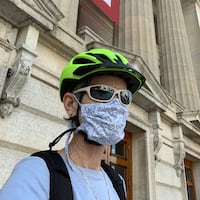The American Civil Liberties Union of Ohio, however, says the broad sweeping bills contain ambiguities that could have a chilling effect on free speech.
The Senate Judiciary Committee has had two hearings on Senate Bill 16, which would introduce penalties for intimidation, menace or assault of first responders or their family members and apply penalties for obstructing roadways in ways that block first responders. If these activities happen during a riot, even harsher penalties would apply.
Police, firefighter and prosecutor groups support SB16.
The House Criminal Justice Committee has had one hearing on House Bill 109, which creates new laws associated with rioting and vandalism.
“The bill before you today in no way infringes on the constitutional rights of Ohioans to freely speak and peacefully assemble. But it does say that when misconduct occurs, when the law is broken, those responsible will be held accountable,” said state Rep. Cindy Abrams, R-Harrison, in sponsor testimony.
HB109 increases penalties for disorderly conduct during a riot or illegal protest and expands the state’s corrupt activities law to apply to those who provide “material support or resources” to rioters.
It also creates a new offense for harassing or intimidating a first responder if the behavior results in death, serious injury or more than $5,000 in damages.
“It’s a nuanced bill and it has a lot of ramifications,” said Gary Daniels, lobbyist for the ACLU of Ohio.
Those who provide support to rioters — anything from bottled water to weapons — could be prosecuted under the corrupt activities law and their organization could be dissolved and assets seized, Daniels said.
Also, five or more people blocking an intersection could be considered rioting, he said.
The far reaching implications could end up putting a chill on citizens’ willingness to exercise their First Amendment rights, he said.
The death of George Floyd on May 25, 2020, at the hands of Minneapolis police sparked waves of protests across the nation over police brutality and racial injustice. Some of the demonstrations led to unrest, arson, looting and other violence as well as thousands of arrests and the deployment of National Guardsmen and police.
In June 2020, Gov. Mike DeWine and Ohio Attorney General Dave Yost announced recommendations to reform police, including ban choke-holds in most cases, the creation of an oversight and accountability board and mandating independent investigations for officer-involved shootings and deaths in custody.
Last summer, more than 30 mostly peaceful protests popped up across the local region, from Hamilton to Dayton to Beavercreek to Springfield.
About the Author
